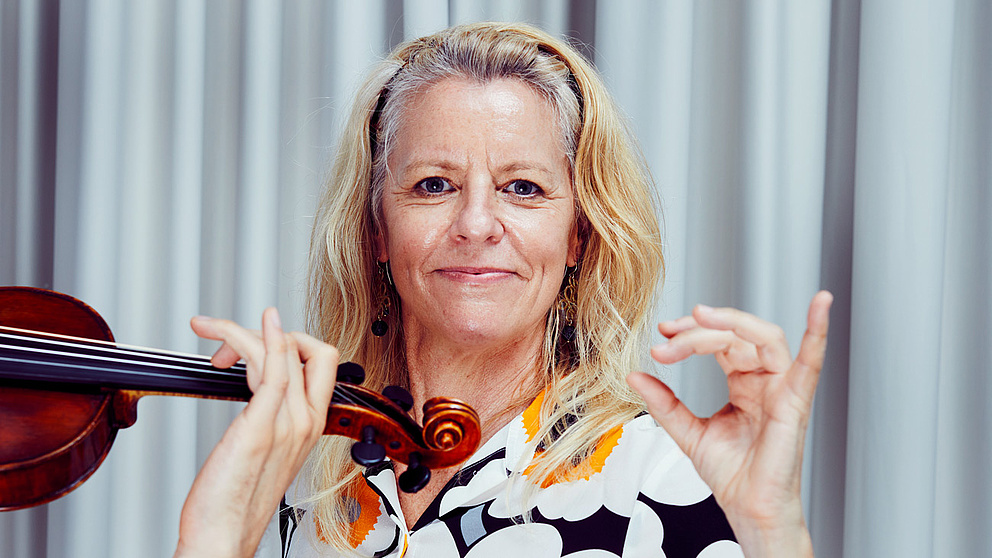Jump to the content
- {{#headlines}}
- {{title}} {{/headlines}}

BRONWEN JANE ACKERMANN
Professor Dr Bronwen Jane Ackermann from the University of Sydney, Australia, is a Humboldt Research Fellow at Hannover University of Music, Drama and Media.
“For professional musicians, dystonia is absolutely disastrous,” says the Australian music medicine specialist and physiotherapist Bronwen Ackermann. “Often, at the very height of their career, the body refuses to do its job and they suddenly can’t play anymore.” According to Ackermann, some three percent of all musicians suffer from dystonia. It is particularly common amongst violinists and flautists who play instruments that demand extremely intensive practice and a high level of speed and precision.
At Hannover University of Music, Drama and Media, she is cooperating on a study with the neurologist Eckart Altenmüller and currently treating 40 musicians: by specifically practising certain movements, the idea is to re-programme processes in the brain that are stored there, but blocked. “To do so, we divide the movement sequences into their individual components and re-learn them from scratch,” explains Ackermann. Previously, dystonia therapy often took several years. Using Ackermann’s approach, some musicians have been able to play again after just six months.

